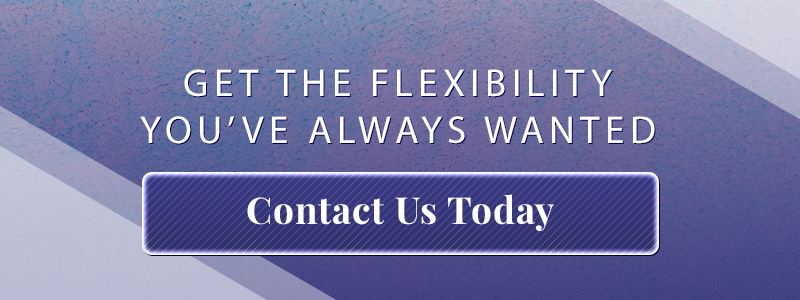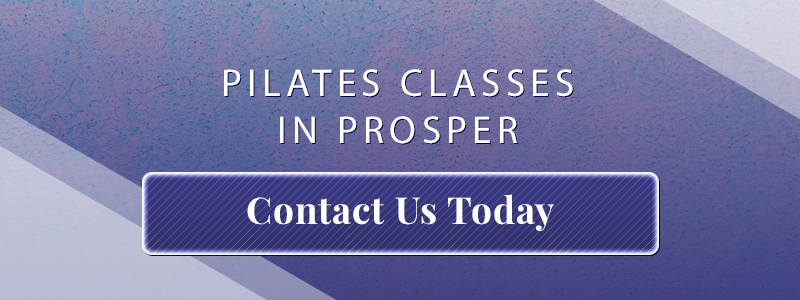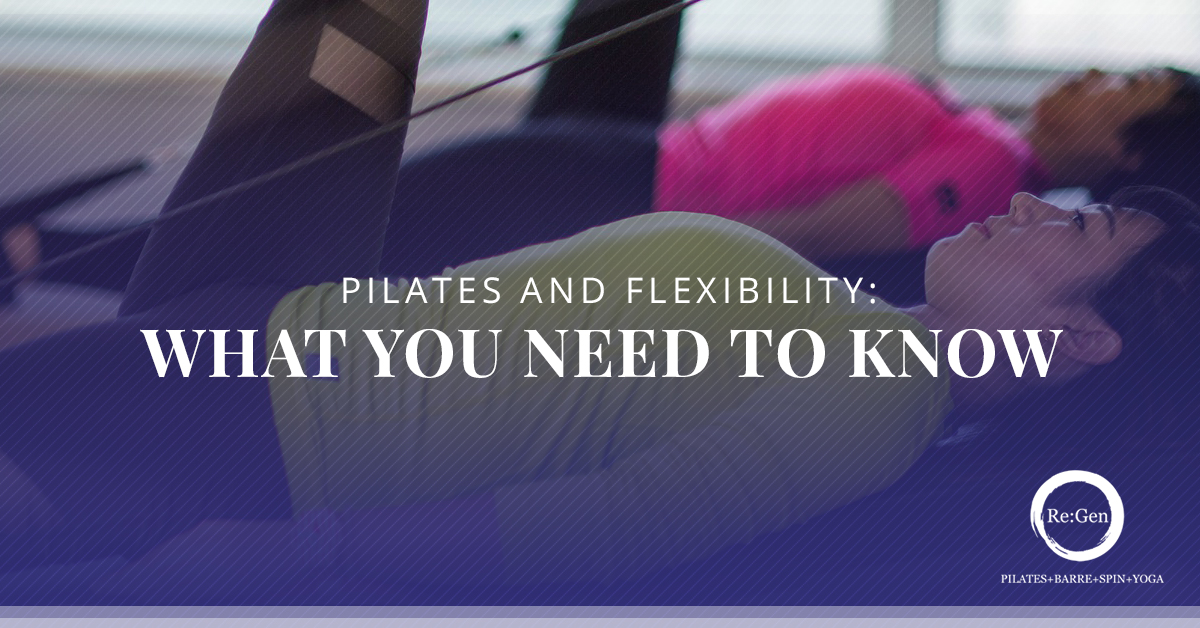“Pilates or yoga?” This is a question we hear all the time at Re:Gen Yoga and Pilates Studio. It’s a good question, and it’s one that’s often asked because everyone wants something different from their workout. Some people want to improve their strength, some people want to improve their flexibility, and others just want a nice therapeutic experience that leaves their mind feeling refreshed and healthy.
It’s no secret that, if you’re looking for flexibility, yoga is the top (or downward) dog. We won’t deny it — yoga is the best for this, and we’ve seen firsthand how many people achieve tremendous growth in their flexibility because of it.
However, you might be a person who desires to improve flexibility, but you still yearn for the main benefits that Pilates offers that aren’t as present in yoga, such as a marked emphasis on increasing bodily strength and building up your core. It would be natural to wonder if Pilates will provide you with as much flexibility training as you want.
We’re happy to say the answer is an unequivocal “yes.” However, there’s more to it than that, so let’s take a deeper look.
 How Does Pilates Improve Flexibility?
How Does Pilates Improve Flexibility?
In a nutshell, Pilates is extremely beneficial for your overall flexibility and is very similar to yoga in the way that it conditions your body to build it up. Yoga and Pilates, after all, are almost two sides of the same coin, and while Pilates isn’t as flexibility-focused as yoga is, you can bet that it’ll give you more flexibility training than the majority of other workouts.
Pilates puts your body through a series of precise, controlled movements. Because you’re often moving into positions that are hard to hold, and trying to maintain them for as long as possible, Your body will undoubtedly be required to adapt in order to meet the needs of the workout. It’s possible (and probable) that you won’t be able to maintain the poses very well at the beginning of your Pilates journey, and that’s fine because flexibility is built over time.
The reason Pilates improves your flexibility more than other workouts is that it’s concentrated on lengthening and expanding of the muscles, and it’s also a workout that requires your body to put itself into unique positions that you wouldn’t normally assume in your day-to-day life.
Consider weight training. If you want to get a high-intensity arms and chest workout, all you need to do is stand up straight and lift weights, or lie down on a bench press. In these workouts, you’re pushing a lot of weight and holding your muscles at their end positions. This is much more useful for building strength than it is for flexibility.
A Pilates workout involves much more unique positions than a typical strength training workout does, and because it relies on active movements and dynamic stretches, the elasticity of your muscles is constantly being tested. This, naturally, will lead to more flexibility.
Why is Flexibility Important?
With that all being said, let’s take a moment to consider why flexibility is important in the first place. Sure, it’s nice to have, but how often do you find yourselves in a situation where you need to move your body into such weird positions as you do when you’re doing a Pilates workout? There are, in fact, many reasons why flexibility is a boon to your health:
- Flexibility Reduces Soreness: First of all, when your muscles have been consistently worked to the point of flexibility, you’re going to experience less pain when you work out. Soreness usually results because your muscles have been worked to exhaustion, and in repairing the sinews, you feel pain that could last for days. Flexible muscles are active muscles that are accustomed to rigorous activity, leaving you in a much better state post-workout.
- Flexibility Makes You Leaner: There are two types of bodies that people are usually shooting for when they work out — bulky and strong, or long and lean. Flexibility helps you to achieve the latter. Our muscles gain definition differently depending on how you use them, and the movements of Pilates results in the lean look — perfect for our many clients who are trying to gain that exact result.
- Flexibility Prevents Muscle Injury: Imagine your body being like a bicycle. Bikes need to be well taken care of to run efficiently, requiring oil, tune-ups, and regular use. If you leave a bike outside for months and months, it’ll be creaky when you use it. Some screws might be loose. The chain might snap off. Our bodies are similar. The less you use your muscles, the more likely you are to injure them or pull something. Regular use makes you more flexible, and flexibility prevents the muscles from afflicting you in ways they shouldn’t.
- Make Everyday Tasks Easier: You’ll notice your flexibility in every aspect of your daily life. You don’t realize it now, but flexibility makes so many things easier. Uncomfortable on long plane rides? Shifting into positions that were once exhausting may become easy. Waking up in the morning, sitting up straight, doing any other kind of physical activity, playing sports — these are all things that benefit from a body that is flexible and lean.
 Pilates, Yoga, Barre, and Spin Classes in Prosper, Texas
Pilates, Yoga, Barre, and Spin Classes in Prosper, Texas
The next time you’re feeling like you want to transform yourself, there’s no need to get on your phone and type “yoga studios near me.” Instead, just head on over straight to Re:Gen Pilates! We have served more clients than we can count from Prosper, Texas and the surrounding areas. If you’re getting sick of not being able to touch your toes and you feel your lower back straining you every time you sit down, it’s time to make a change.
Our Pilates classes are fun, engaging, and they will give you a solid workout that will leave you wanting more. Don’t know if Pilates is up your alley? No problem! We also offer yoga, Barre, and spin classes. There’s nothing we want more than for you to be happy or healthy, and at Re:Gen Pilates, we want to help you every step of the way. Contact us today!

leave a comment